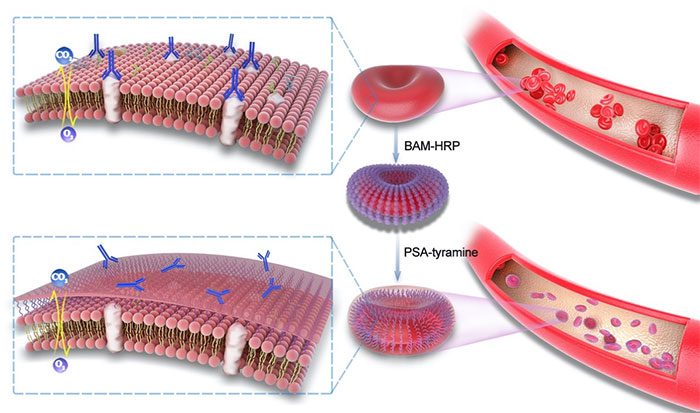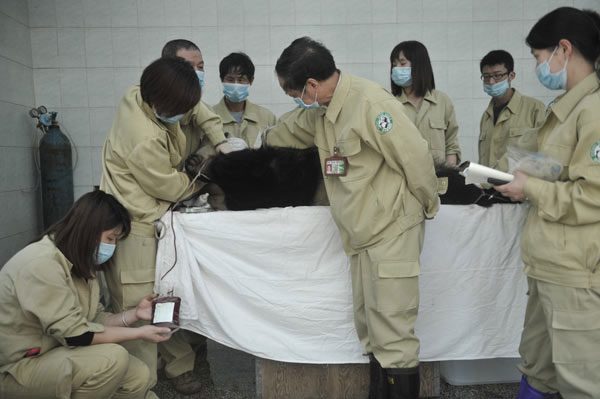According to recent research, the blood of the giant panda may be the next important component in the field of antibiotics, especially for strains of bacteria that have become resistant to our conventional drugs.
Why is Panda Blood Rare?
Statistics show that there are approximately 2,000 giant pandas in the world, which is one of the reasons that make them an endangered species. The scarcity of panda blood is related to its limited quantity. Additionally, the panda’s habitat plays a significant role in contributing to the uniqueness of this animal’s blood. The habitat of the giant panda primarily spans the Sichuan Plateau in China, where the climate, diet, and ecosystem all affect the composition of panda blood.

There is a substance called “Panda Antigen” in panda blood. Panda antigens have been found to possess antibacterial, antiviral, and anti-cancer properties, making panda blood a potential resource for drug development. Researchers have successfully isolated panda blood group antigens from panda blood and have begun further studies on them. (Photo: Zhihu)
The rarity of panda blood is also associated with its unique physiological mechanisms. Studies have discovered that panda blood contains a special anticoagulant factor. For instance, panda blood is rich in a substance known as “panda blood cellulose”, which has strong clotting abilities. This makes cellulose in panda blood a promising candidate for the production of artificial coagulants, potentially applicable in fields such as surgery and trauma treatment.
The blood type of pandas is also one of the reasons their blood is so rare. Research indicates that panda blood types are classified into four categories: A, B, AB, and O. Type A is the most common, followed by type B, while types AB and O are very rare. Specifically, types AB and O account for a small percentage of the total panda population. This uneven distribution of blood types further exacerbates the scarcity of panda blood.
What is the Importance of Panda Blood in Medicine?
The rarity and uniqueness of panda blood in scientific research are among the important reasons that contribute to its value. Pandas are one of the least common animals in the world and their blood is also extremely rare.
Recent studies have shown that panda antigens exhibit superior antibacterial efficacy. They effectively destroy bacterial cell walls, leading to bacterial death. This discovery provides new ideas for the development of new antibiotics and antibacterial agents.

Panda antigens could become powerful weapons against drug-resistant bacteria. (Photo: Zhihu)
In panda blood, there is a special component – specific immune antibodies, which can combat the invasion of many types of bacteria and viruses. Through in-depth research on panda blood, scientists can explore the mechanisms of action of these specific immune antibodies, leading to new ideas and methods for studying the human immune system.
The specific immune antibodies in panda blood can be utilized to develop new drugs and treatment methods. For example, by studying the structure and function of antibodies in panda blood, it may be possible to develop more effective and safer vaccines and antibody drugs, thereby providing better protection for human health.
Panda blood also contains several special components, such as insulin-like peptides and antioxidants, which are crucial in combating cancer and aging. Therefore, in-depth research on panda blood could lead to breakthroughs in human healthcare and disease treatment.

Panda blood group antigens also possess antiviral properties. Preliminary experimental results indicate that panda antigens can inhibit the replication of the hepatitis B virus and the human flu virus. This discovery opens new avenues for the treatment of viral diseases, especially those that currently lack effective treatment methods. (Photo: Zhihu).
As a protected species, research on panda blood can also help promote the development of biodiversity conservation and environmental protection efforts. Through in-depth studies of panda blood, we can understand the biological characteristics and ecological changes affecting pandas, providing a scientific basis for more informed decision-making regarding their protection and conservation.

Panda antigens have also been found to have potential in anti-cancer research. Preliminary experiments suggest that panda blood group antigens may inhibit the growth and spread of cancer cells. This discovery brings new hope for cancer treatment, particularly for hard-to-treat types of cancer. (Photo: Zhihu)

Although pandas are protected, the use of their blood samples in scientific research is still permitted. Currently, methods for extracting panda blood are being improved to ensure minimal harm to the pandas. Furthermore, researchers are also conducting similar studies using the blood of related species (such as other bear species) to avoid over-harvesting the rare giant pandas.


















































